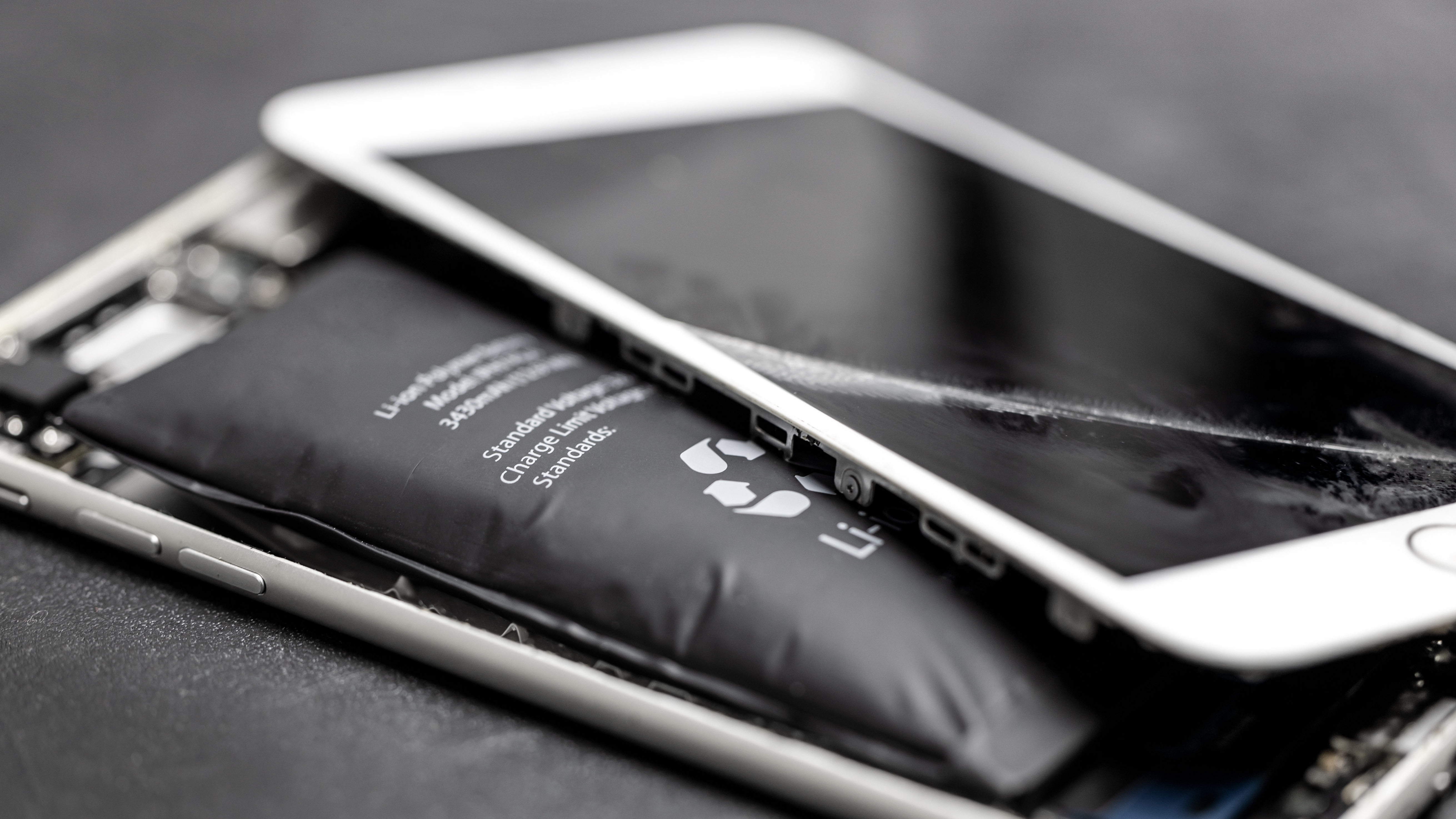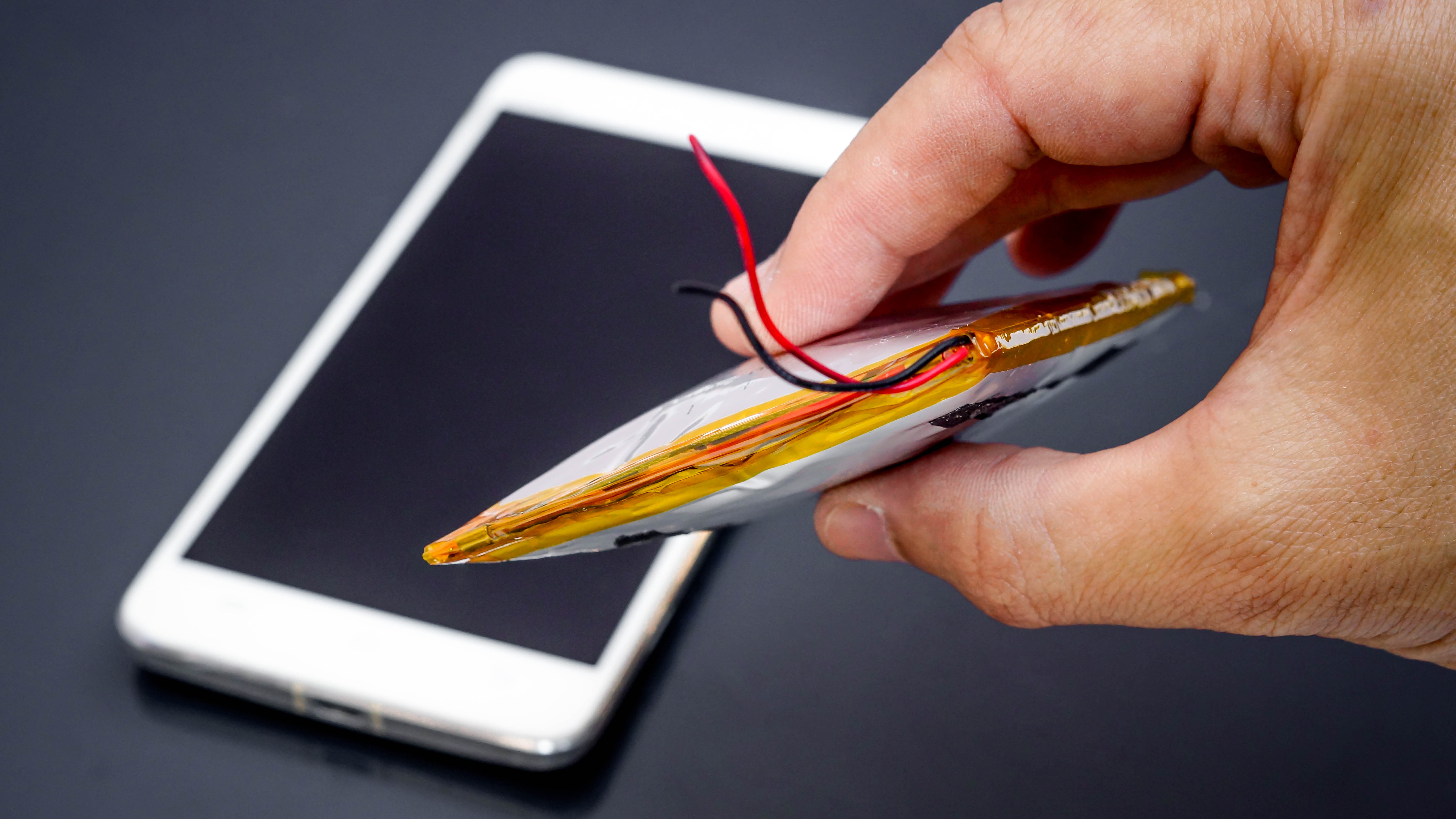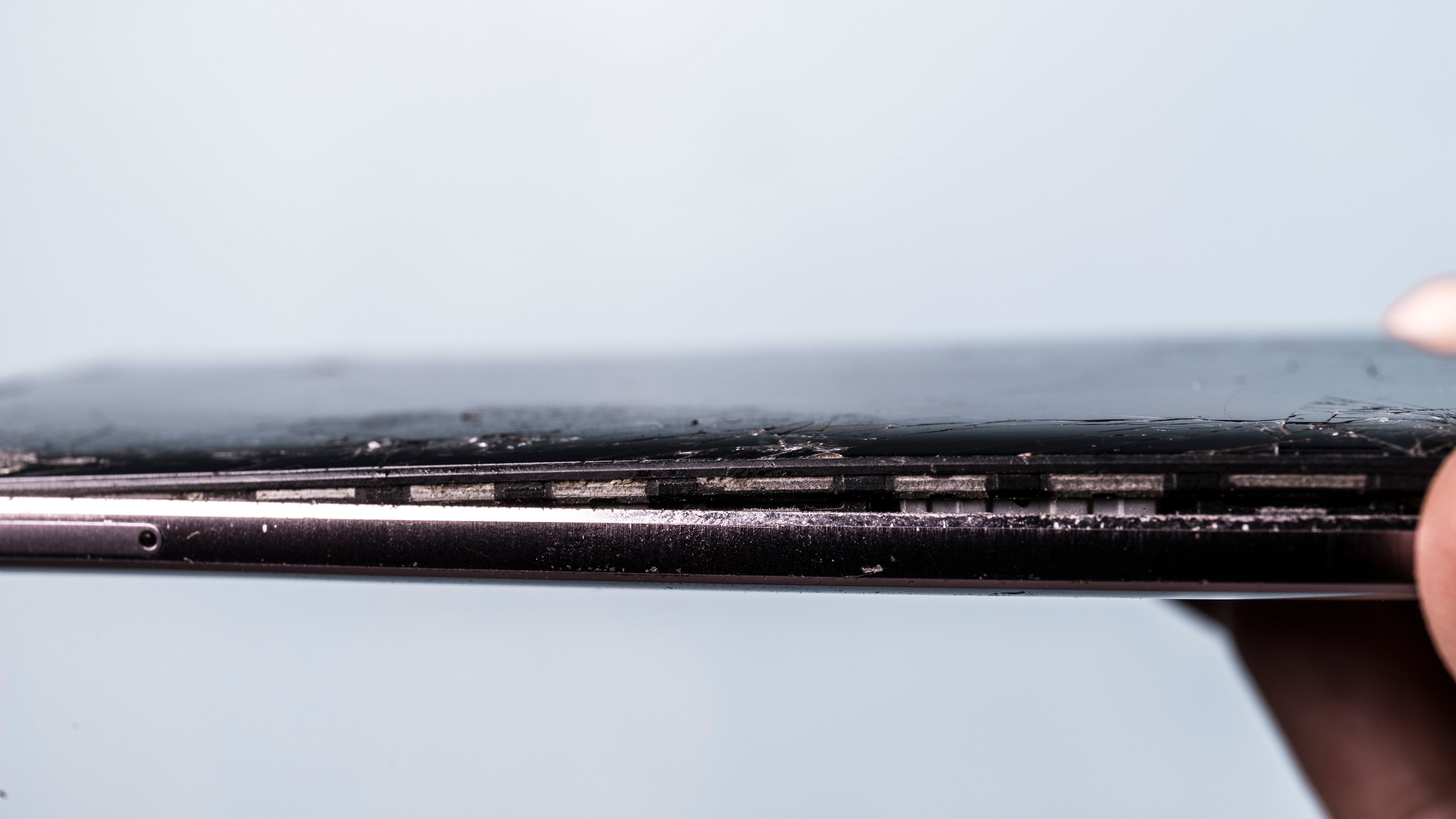How to dispose of an inflated phone battery
Here's how to safely deal with swollen phone batteries

Ever gone looking for an old phone, only to find the frame swollen and deformed, the screen pushed out from the frame, or the display covered in discolored patches? You've likely fallen victim to an expanding battery.
Phones generally use Lithium-Ion or Lithium-Polymer batteries, which can inflate if damaged or overcharged. This causes a surplus of current in the battery cells, causing a buildup of heat and gasses which can be toxic, flammable, or explosive if the battery is ruptured.
Inflated phone batteries can't be repaired, only replaced or disposed of, and they can’t be put out with regular trash or recycling. Don’t attempt to remove or destroy an inflated phone battery yourself – there’s a serious risk of fire or injury.
If you find yourself in this unfortunate situation with your phone, don’t worry – we’ve put together this guide to help you get rid of your inflated phone battery.
Tools and requirements
- A fireproof container or bag, such as a metal bucket filled with sand
- A phone or connected device to contact recycling centers or local authorities
Quick steps for how to dispose of an inflated phone battery
- Put the phone into a fireproof container or bag
- Place the phone in a cool, dry place away from flammable materials
- Find somewhere that can deal with inflated batteries, such a recycling center or a repair shop
- Take the battery to your chosen disposal service in as safe a manner as possible
- Follow the given disposal instructions
Step-by-step guide
1. Place the phone into a fireproof container or bag

Before doing anything else, you should place the phone into a fireproof container or bag and seal it shut. Lithium-based batteries are most likely to set alight or explode when ruptured, but could do so unprovoked.
A cheap and easy option for a fireproof container is a metal bucket full of sand (as iFixIt suggests). It’s also wise to have a fire extinguisher on hand when dealing with swollen batteries.
If you can’t get a fireproof container or bag, place the phone somewhere cool* and dry, away from sunlight, other batteries, and flammable materials (*don’t put it in a refrigerator or freezer, though). Put it outside if possible.
2. Find somewhere that can deal with inflated batteries

Once you’ve mitigated the fire risk as best as you can, look for a disposal service that accepts swollen batteries.
Recycling centers may be able to dispose of swollen batteries. We suggest that you call ahead or check online to see whether your local recycling center can accept inflated batteries.
iPhone owners can make use of Apple’s battery repair and recycling services at Apple stores.
Phone or tech repair shops are a fairly safe bet, especially those authorized by your phone’s manufacturer: these businesses likely deal with swollen batteries on a regular basis, and can generally be trusted to dispose of them properly – though they may charge for the service.
In the US, battery collection points that are partnered with the campaign group Call 2 Recycle cannot accept damaged batteries, including swollen batteries. The group offers a way to mail these batteries with Department of Transportation-approved containers that start at a hefty $93.
If you’re reading this from the UK or Australia, check local government guidance to find a recycling center near you.
3. Take the inflated battery to the disposal service, and follow the instructions given

Once you’ve identified a suitable way to dispose of your inflated battery, take the device there (ideally still in its fireproof container).
At an Apple store or independent repair shop, the technician present will advise you on whether the battery can be safely replaced. This will likely depend on how damaged the phone is overall, as it may be more cost-effective to just dispose of the entire device.
At recycling centers, follow the instructions of staff or signs to ensure you put the swollen battery into the right bin or collection point.
Troubleshooting
How do I stop a phone battery from inflating?
All rechargeable batteries are ultimately consumable, and once a battery has already inflated, there’s no way to return it to a usable state. There are, however, things you can do to prevent your phone’s battery from inflating. You can prolong the lifespan of a rechargeable lithium-ion battery by keeping it between 20% and 80% charge most of the time, especially when storing it for prolonged periods. Many phones come with the option to limit maximum charge to 80%.
There’s no need to avoid hitting 100% when charging or running your phone down to 0%, but keeping the battery between 20% and 100% puts less pressure on the battery and creates less heat, another stressor on battery health.
Phone batteries are designed to be used, so keeping a phone plugged in at 100% for prolonged periods may impact battery health and increase the chance of inflation.
What should I do if I can't find a disposal service?
If you’re struggling to find a collection point near you, we suggest contacting your local authorities, who should be able to point you in the right direction.
It isn’t a good idea to just ignore an inflated battery. The chances of a rupture will vary based on the condition of the battery and the conditions you keep it in, but an inflated battery is always a fire hazard, so it’s worth finding a way to dispose of them properly, even if it takes a bit of calling around.
You might also like
- The best iPhone chargers 2024: top-tier cables, mats, and blocks for your iPhone
- We might have a launch window for the much-anticipated OnePlus Open 2
- How to root an Android phone
Get daily insight, inspiration and deals in your inbox
Sign up for breaking news, reviews, opinion, top tech deals, and more.

Jamie is a Mobile Computing Staff Writer for TechRadar, responsible for covering phones and tablets. He’s been tech-obsessed from a young age and has written for various news and culture publications. Jamie graduated from Goldsmiths, University of London in 2024 with a bachelor’s degree in Journalism. Since starting out as a music blogger in 2020, he’s worked on local news stories, finance trade magazines, and multimedia political features. He brings a love for digital journalism and consumer technology to TechRadar. Outside of the TechRadar office, Jamie can be found binge-watching tech reviews, DJing in local venues around London, or challenging friends to a game of Super Smash Bros. Ultimate.